

Hacking has become a major buzzword. Everyone wants to find a way to hack their health, productivity, or pretty much anything else we wish didn’t take so much effort. Goetz is no fool when it comes to marketing; knowing the course name “eCom Hacks” will draw attention.
So can you really "hack" your way to dropshipping mega-money? Check out my full eCom Hacks academy review to get the scoop.
I’ll also dig into dropshipping, sharing powerful insights you need to be aware of in 2021 and beyond. Like, how the new Apple IOS change will impact dropshippers?
And suppose you’re still not sure what online business model to choose. Let me show you why I think Local Lead Generation is the sure-fire route to scalable passive income. I’m talking serious F.U. money without all the constant work I had to do with dropshipping or Amazon FBA.
1. What is eCom Hacks?
Formerly known as eCom Hacks Academy, this course focuses on what Goetz has coined the “Dropsurfing” model.


It’s a fancy name for capitalizing on “Fad products” to dropship.
Scaling as quickly as possible to catch the wave of the sales cycle.
And then continually searching for the next wave, and the next wave.
The term “hack” promptly describes this course well:
Copy what already works, grab what sales you can, and hop to the next product.
This method has become increasingly popular. There’s plenty of eCom spying platforms and plugins to see which products are going viral and what creative they are using to convert.


Let’s be honest; it’s so much easier to copy what’s already working and grab a piece of the pie - at least in theory.
But can you really make a full-time income and quit your job with this method?
It’s an incredibly high risk.
And with a narrow profit margin from the 10-20% of winning products you test, it’s unrealistic for most folk to see this as a long-term business - especially compared to other options, like Local Lead Gen.
If you're serious about building a long-term biz, I'm not convinced that "hacking" any business model is the path to being legit.
Enough of the theory, what does eCom Hacks bring to the table.
The first module aims at dropshipping newbies.
You’ll run through how to get a domain and to set up a basic Shopify store.
Jared has a cool tip in here about creating a 1-800 customer service phone line to make your store look more professional.
There’s nothing else out of the ordinary on offer here.
Moving on to module 2.
Well, you’ll have to purchase their theme first.


The entire section about dialing in your store to maximize conversations relies on the Shopitmized theme, which will run you at least an additional $167 that you probably didn’t expect to have to spend.
And it’s much more expensive if you plan to set up more than one store.
If you don’t want to buy a theme and stick to the free options, for now, I suppose you could find a good YouTube vid to help if you get stuck or just follow along with Shopify’s own tutorials.


If you decide to shell out for the theme and put a few extra dollars in Jared’s pocket for signing up, there are 24 videos to follow to get up and running here.
Module 3 on products is a bit of a let-down.
You get an intro that reminds you that 1 good product out of every 10 you test is realistic in his experience.
(That seems like a lot of work with minimal guarantee of success compared to other business models).
Jared offers a few helpful things to look for in a product, its marketing, and general info on mark-ups for pricing.
Margin is at least 75%
If item costs $10
Sell for minimum of $17.50
If item costs $50
Sell for minimum of $75
Next, you get pushed to his platform to select and source products. The platform seems to have tanked in the eyes of legit reviewers (read on to find out why).


Outside of some suggestions on what to look for in a product, there are no strategies or examples.
- A short video
- Show the product in use
- Make the content shareable
- Be direct & get straight to the point
So, unless you want to use his Zendrop platform, you're going to have to figure out how to pick suppliers and sync products to your store on your own.
Not what I would have expected for a course of this price point, but let's continue.
Module 4 is all about advertising.
And to be honest, this is the most detailed section of the course.
There's a wide range of must-know advertising info:
Various people teach the videos here.
I found this a bit concerning since I thought I was learning from Jared himself, and he was sharing the secrets he used to drive that 7-figure store.
The section on Facebook's algorithm offers some good, detailed insight into an overview of how to think about Facebook ads.


The audio quality sounds almost like a conference presentation, and Jared has snagged it for his course.
One of the best tricks here is delaying your pixel.
Firstly, it will produce better audience feedback.
Secondly, it will lower your bounce rate by not counting visitors who leave your store right away if they’ve changed their minds.
There are some quality insights into managing your ad account and how to determine when you're at risk of having your account suspended - and what to do about it.


My main gripe about this, and dropshipping in general, is consistently having to monitor and make adjustments.
It's really time-consuming, and ad-spend can make or break your bank balance if you get it wrong.
However, you might be asking...
2. Who is Jared Goetz?
Jared has been through quite the entrepreneurial roller coaster ride.


A Long Island, NY native, he grew up in a tiny 1-bedroom apartment he shared with his mom.
Like many young entrepreneurs, his mom had always nagged him to get a real job.
Until that is, he finally hit the jackpot with an eCom store that went from 0-$2 million in 60 days - being the 2nd best store in sales in 2017, only to Kylie Jenner’s store.


Jared said he grew up "scared of being normal" and was always looking for ways to build an extra income.
He got his first taste back in High School from renting out houses during prom season. He also tried his hand at junk removal and car washing but neither worked out.
His big break came while he was in college at Albany in New York when a friend connected him with someone who booked artists for concerts.


He found the artists were eating into the profits big time so he set about finding another way to entertain party-goers.
By hosting giant foam parties with DJs and circus acts - the events went by the name Electric Flurry.


At one point, he’d generated over $1 million in ticket sales with his biz partner, but it all went south when they rented a huge stadium, and it didn’t go as planned.
Goetz had put all his money into the gig plus another 50k investment he’d borrowed. Consequently, he was sued $250k for damages and felt under tremendous stress from the whole ordeal.
Fortunately, the social media app Yik Yak had already shown interest in sponsoring Electric Flurry events. This connection led to a job in promotions for Goetz as a college marketer for them.


This chain of events would change Jared’s future trajectory.
What do they say about when one door closes?
A connection in China shipped him a hoverboard in secrecy, wanting Jared to ride them around college towns to generate some buzz.
Before long, everyone asked where they could buy one, and Jared saw an opening to get in the market before anyone else did.


He set up his own “Glider” brand and a branded website to direct people when they asked how to get a hoverboard.
Wondering how he could sell more, he hooked up with his buddy from Yik Yak, Jack McCall, who already had 50k Instagram followers to promote the Glider.
McCall introduced Goetz to more influencers, and sales snowballed from there.
Jared said he did $250k in just the first month while still working for Yik Yak.
Unfortunately, it didn't take long for other sellers to flood the market.
And you might remember all national headlines about hoverboards catching fire and burning down homes.


As a result, hoverboard sales took a nose-dive and the craze was over.
Knowing he knew he could build a store and sell online, Jared started searching for his next product.
Seeing an inflatable lounger on kick starter selling for $100, he found a manufacturer in China who could produce them for $12.
Jared decided to sell his Dumbo Lounge Sacks for $70 through retail and tradeshow events.
He reinvested the profits and scaled to $2 million in sales in just 6 months - this is the sales metric he’s known for in 2017 that came second only to Kylie Jenner’s store that year.


Goetz took a cross-country road trip and outsourced his Facebook ads monitoring and customer service for a few days, which got him into outsourcing to help manage the workload involved.
Sadly, he ran into a supplier who decided to scam him by sending 7000 fake tracking numbers out on his Goetz behalf to customers without sending any products.
Overall, this cost him $450k and considerable time to contact every customer to ask if they wanted a replacement or a refund.
With the mess created, Goetz had to shut down his entire operation and start over again.


As you can see, Goetz is truly an entrepreneur at heart, and I admire his grit to keep dealing with various problems he lands himself in.
Selling information has become a huge trend, and Jared got in on the act with his eCom Hack course.
I mean, it makes much more sense for many dropshippers to want to sell an info course for $2k with close to 100% profit margins than it does a product for $30 with maybe 10-20% profit if they hit a winner.
Just think about how many products you'd have to sell and how much time the customer service would take up to generate $2k of pure profit?
Jared recently began getting in on the podcasting game and focusing on lifestyle hacks with his Modern Soul episodes.


He even has an interview with Robin Sharma (of the 5 am Club) about transformative habits.
He's also recently released a book entitled "Overnight Success: Your Inner Game Playbook for Your First Big Breakthrough.”


The book is an excellent read into an entrepreneur’s lifestyle and habits, but the title is confusing because there is no such thing as an "overnight success.”
It's a bit like dangling a 7-figure store in front of someone and then saying it will take years of trial and error to get this too.
But before we get too far ahead...
3. How Does Dropshipping Work?
Simply put, you are the middleman between the supplier and the customer, but you never have to touch the product.
The key is to find a product that will be popular, create enticing marketing material, and then get it in front of an audience who will buy it.
There are several platforms available to source products.
The most common for new dropshippers is AliExpress, designed with the dropshipper in mind.


After selling a product in your store, you place the order with your supplier and pay them for the item.
They will then package and ship that item to your customer for you.
After covering paid ads, the cost of goods sold (COGS), merchant fees, and any additional expenses, you get to keep any remaining profit - if there is any profit.
Yep, you read that right.
Many stores don’t make a profit at all.
It takes work, skill, and patience to build a successful dropshipping store.
And even then, as Jared openly states, you may only find 1 product in 10 produces any real profit.
4. Is Dropshipping Legit or a Scam?
Here's the deal.
As a business model, dropshipping is absolutely legit.
There are plenty of middlemen connecting suppliers to buyers and taking their sliver to deliver in many industries, not just dropshipping.
But look, many customers prefer the assurance of buying from a trusted and reputable business and that’s not the perception given off from dropshipping in general.
And this is where dropshippers walk a very fine line.
The mark-up on items and the emphasis on creating a "branded" appearance can fool a customer into believing they are buying something of much higher quality than is being delivered and from someone other than a drop shipper.


Now, if you run a dropshipping store, you'll probably experience a scammy supplier or two.
Take Jared's experience of the supplier who sent out 7,000 fake tracking numbers, costing him $450,000 in sales and doing serious damage to his Shopify reputation in the process.
Or perhaps they will send knock-off products or items that simply don't work to your customer.
And those shipping delays. Imagine having to explain to customers that the real delivery time is more like 30-45 days.
Unless it's the Chinese New Year.
In which case it could be more than 2 months.


Because everything shuts down for one big long national celebration.
The supplier might tell you that they will be operating as usual because they want the business.
There's a lot of emphasis in all the dropshipping courses on avoiding looking like a dropshipping store.
And there is no shortage of questions on platforms like Reddit from people trying to figure out how to pretend to customers that they're not dropshipping.
Most people are okay with skirting between those lines if it means making money, but how far are you willing to go.
And is that a legit way to build a stable business in the long-term?
In case you're wondering...
5. How much Does Jared Goetz's eCom Hacks Cost? Any Specials?
Now, signing up for eCom Hacks is a challenge in itself.
Goetz only opens the course up at certain times for people to apply.
You’ll have to schedule a call to prove that you qualify, aka have the resources to spend - you can't just decide to purchase the course and do it.


Usually, eCom gurus have 'qualifying' calls when it's an expensive course.
And watch out here because some of them have a rep for 'packaging' you based on what you've already said you have available to invest.
The course itself costs a cool $1999 at the minimum level.
To follow along, you'll also need to purchase the Shopitimized theme for your store.
That will set you back anywhere from $167-$597, depending on how many stores you plan to build.


There are other platforms and subscriptions, like Zendrop, if you are going all-in on Jared's dropsurfing methodology.
Also, Goetz reminds students that they'll need around $1000 in ad spend to see results from this course.
It can take 60-90 days sometimes to receive your money from Shopify and Paypal, specifically when starting or if you’ve had some bad reviews.
The bottom line is if you don't have deep pockets to start with, this isn't for you.
All in all, if I were restarting my dropshipping biz, I'd expect to invest 10-15k to get started.
And specials? Nope, don’t expect to find any specials.
Oh, and I'm a bit concerned about there being no working link to the terms of service or privacy policy.


For a website selling something costing an arm and a leg, keeping the legal pages up to date should be a given.
Pros of eCom Hacks
6. Jared Keeps Expectations Realistic
You might be wondering why I’ve chosen this as a pro?
Well, Jared is serious when it comes to being successful and that means becoming the kind of person who deserves success. This starts from the inside-out.
To be fair, if you watch his YouTube videos, he’s really taken teaching these concepts to an entirely new level. In fact, there are more self-development videos than dropshipping recently.
But why do I value this you ask?
Because it’s always exciting in the beginning.
It’s easy to be enthusiastic when you’re full of optimism and it’s the latest, new shiny object in your life promising gold waiting for you on the horizon.
Jared earned his smarts at the school of hard knocks and helps keep his students grounded.


He shares the stone cold truth with dropshipping and that you’ll have far more losers than winners.
In fact, not to get disheartened if you only get one winning product out of every 10 you test.
IMO 10% is a lot of wasted effort when other courses are saying they can produce a 65% success rate.
7. In Depth Knowledge on Facebook's Algorithm
I'll take my hat off to Jared here.
Not only does he share some real Facebook Ad Strategies, but there are also plenty of lessons here on how Facebook works for advertising and the why behind his suggestions.
The info on optimizing your pixel is great and how not to get dinged by people who immediately leave your store because they realized it wasn't what they wanted is a valuable tactic.


There's a comprehensive breakdown of audience targeting and factors in choosing them.
One of the biggest dangers for dropshippers is having your Facebook Ad Account suspended.


Jared shares the warning signs that a suspension is looming how to reduce the risk.
This was always one of the biggest concerns for me.
I mean, what if all my incoming traffic dried up overnight and there was nothing I could do about it because I accidentally broke a Facebook algorithm rule?
At least there's an element of reducing the risk with Jared's insights here, but it's leaning toward black hat methods, which might not sit well with many.
Or with Facebook if they discover what you're doing to hack their algorithm.
8. Jared Keeps It Simple & Easy to Follow
The videos are pretty short on length, with an actionable point or two to apply.
There are several courses out there lasting over 30 hours with long, drawn-out videos.
They can take a lot of time to get through, and I'm sure many students feel so bogged down that they simply give up.
Jared's teaching style is high energy but easy to follow.


There are some videos where he's just talking to the camera, but many practical topics are in the over-the-shoulder format that is ideal to follow along.
The ads section will take a bit to sink in and put into practice, but the bite-sized videos are easy to go back over when you need to find something specific to apply.
9. Bonus Course based on Dropship Lifestyle
Okay, so this definitely isn’t Anton Kraly teaching here but the slides mirror much of what Anton teaches in his DSL course.


Now, Dropship Lifestyle will set you back around $4k for the mid-level course, so this is a cool bonus.
If you don't want to process hundreds of sales to meet your targets with drop surfing, selling high-ticket products is an alternative.


From experience, this isn't as easy as it sounds if you're doing it the DSL way though, because you need local suppliers and specific terms of sale.
Sounds great in theory but trust me, it's a lot harder to put into action than they make it sound.
Cons of eCom Hacks
10. You’ll Need to Purchase Their Shoptimized Theme
Well, I guess you could try without it but then you’ll have a lot of researching and trial and error to do you on your own.


eCom Hacks assumes you’re working with the Shopitmize theme so you won’t need all the plugin it claims to save you having to buy.
Here’s the kicker, if you don’t buy the theme, you’re going to need to buy some of plugins and figure out how to use them for yourself.
And it doesn't come cheap, especially if you plan on having more than 1 store.


You might as well just buy a different course if you don’t want to use the Shoptimize theme in the first place.
But hey, at least you know about it now and won’t feel like you got the rug pulled out from under you after you’ve just shelled out 2k for the training.
11. Doesn’t Teach Product Research or Supply
So, this is a bit of a deal-breaker in my book and a BIG reason why I'd be hesitant to rely on eCom Hacks to build a true dropshipping biz.


The only things taught here are:
There are a lot of essentials missing here that the best dropshipping courses teach you:
Zendrop was initially released as Silkroad.io, but it crashed and burned.
There are a ton of bad reviews to be found online about it.


Looks like Goetz and his crew decided to rebrand and give it another go.
Sadly, it's still getting negative reviews.


I have no problem with offering a fulfillment service to dropshippers.
BUT, it seems a bit questionable if that's the only choice provided and there is ZERO info on how to do it on your own.
I doubt that Jared relies on Zendrop, making his product choice accessible to everyone else in the process.
Now, it's such a shame he didn't detail his own methods because, with his track record, it must be much better than those on eCom Hacks.
This section could have offered so much more valuable content.
But then, it begs the question of why someone would be willing to give away all their secrets if they were really that great.
Perhaps Jared simply isn't willing to share the real juicy methods for product sourcing here.
12. Heavy Reliance on Facebook Marketing
Ah, the all-mighty Facebook.
Probably the biggest expense you'll have for dropshipping, and one of the most stressful things in the life of a dropshipper.
Don't get me wrong, when your ads work, great.


But more often than not, you can run up significant expenses and have nothing to show in return.
The cost of paid ads is continuously increasing - another reason that dropshipping isn't the goldmine it was a few years ago (like when most of these gurus got started).
The big risk with only relying on Facebook for marketing is if you get your account shut down, what then?
All your traffic, and income, disappear in an instant.
And with the latest Apple IOS update, we will see a drop in the quality of audience targeting with many consumers deciding they don't want Facebook tracking their every move online.


These days you need an arsenal of marketing channels at your disposal.
IMHO, email marketing is essential for eCommerce.


It does take time to build a quality list but it's a low-cost way of increasing conversions and generating more traffic to your store without relying on paid ads.
Learning how to build a basic sales funnel is another strategy worth its weight in gold but it's missing from eCom Hacks.
There is a quick section on Instagram Influencers, but it's limited compared to other courses I've taken.
13. Not a Recommended Business Model for 2021
Where to start?
A quick Google search, and you'll see the only people with positive things to say about getting into dropshipping are the same people selling courses on how to dropship.


Yes, people probably do ask this every year because it's a big concern.
See, many of the gurus who sell these dropshipping courses got out of dropshipping years ago - think Adrian Morrison and Anton Kraly for starters.
If it was soooo great, why get out?
Next, the pandemic has thrown most of the planet into a financial mess. Supply chains are suffering from disruption, meaning lengthy shipping times and increased costs that have more than doubled in some cases.


Many industries have been severely rattled, like travel, dining, and manufacturing because people needed to social distance for safety, and businesses had to let employees go to save costs.


The result is lost jobs and lost income.
How does this impact dropshipping, though?
Well, do you think people will be trying to buy fad products and other luxuries if they're not sure how to pay their rent or put food on the table?
For many people, it's going to take years to get back on their feet financially, and online shopping is off the table if it's not for essential items.
Now sure, there are still going to be things that sell well online, and some dropshippers will make good money.
But here's the deal: they are already well established with teams of VAs, SOPs, in-house fulfillment channels, and deep, deep pockets.
Your guru isn't going to tell you about this.
You're also trying to compete with Amazon and now Walmart with their lower prices and quicker delivery times.
The odds are seriously stacked against a newbie trying to dropship from Aliexpress or Zendrop while learning Facebook ads or how to get Instagram Influencers to help you hit the jackpot.
With so many people already in the marketplace, the only place to compete is on price.


Decreasing profit margins and leaving a lot less room for error or testing on your ad campaigns.
Lastly, we already talked about Apple's IOS 14 update.
Without those target audiences, those Facebook ads will be less effective and won't convert.
It will be interesting to see if dropshippers can find a way around this in the future, but the bread 'n' butter ads method, which has fueled dropshipping for so long, looks in serious jeopardy.
All things taken into consideration, putting your time and resources into dropshipping is one giant gamble.
14. Do Jared Goetz's Students Actually Make Money?
Hard to say.
This is the BIG PROBLEM with evaluating eCommerce businesses when the only thing they share are vanity sales metrics.
Anyone worth their salt in business knows the ONLY thing that matters in business is PROFIT.
At best, performing products make maybe 10-20% profit margin after expenses.


If you sell $1000 of product a week, you might make $100-200.
Okay, so it's not bad for a hobby but consider the resources you just sunk into the products that didn't work?
As with all of these dropshipping courses, there’s no info on what % of the vanity metrics end up in student’s bank accounts after all is said and done with expenses.
Nor what % of students who give the material a real go actually end up being able to make enough money to even cover the expense of the course in the first place.


Jared preaches about the level of consistency and the work required to build an eCom business.
But let's be completely honest here, there are NO guarantees that you'll make any money with dropshipping.
15. Who's a Good Fit for eCom Hacks?
Great question!
In a video interview, Jared stated that when he designed this dropshipping course simple enough that his mom could follow it, suggesting that she isn’t the most tech-savvy person.
There are some mixed messages here that I found confusing.
Jared designed a course that everyone is capable of following.
But he doesn’t allow just anyone to sign up. They have to go through a qualifying process first.
It’s not clear what qualifies them exactly.
I’m guessing it’s whether they can access money to invest in the course and dropshipping.
After all, to get an eCom store up and running, plus going through the ad testing to the point you have it figured out, you can expect to spend $10-15k.
16. What alternatives are there to Jared's eCom Hacks?
There's absolutely no shortage of dropshipping 'gurus' selling courses.
For a more detailed list, check out my list of the best dropshipping courses.


eCom Elites
Franklin Hatchett’s eCom Elites dropshipping course has long been considered the people’s choice due to its humongous content and a low, low price.
Honestly, it’s tough to find a course that could be considered better value for money.


eCom Elites not only takes a beginner from A to Z on their dropshipping journey, but there’s plenty here for even an experienced pro to learn some new concepts.
Do you know what I like most about Frank’s course?
He teaches the why and the how.
It’s not a paint-by-numbers tutorial that’s going to leave you scrambling when eCommerce evolves, or the old way doesn’t work anymore.
So, one thing about Franklin, he’s like the OG marketing wizard.
He’s a master at affiliate marketer (see my review on his Savage Affiliates course) and holds nothing back here with eCom Elites when it comes to spilling the beans on marketing.
Frank teaches everything from ChatBots and email marketing to sales funnels and basic SEO strategies.
One word of warning here (I already mentioned Hatchett’s affinity for a bit of affiliate marketing), he demos the Shopify part of the course using his own eCom Turbo theme.
Yes, another course expecting students to pay for a theme instead of teaching the basics on a free theme.


Again, not a total deal breaker but just an added expense to be aware of.


eCommerce University
Now, if Hatchett is the dropshipping old guard, eCommerce University’s Justin Woll is one of the new kids on the block. And boy, is he creating waves.
This New Jersey college-dropout has like a handful of two Comma Clickfunnel awards in the bag already.
Woll has positioned himself as a big hitter in the eCommerce space and is taking the dropshipping course and mentoring world by storm.
To be honest, I’ve yet to find an eCom or dropshipping Facebook group whose main man is as active as Justin is with content in his group.


Justin only teaches the copycat method for product research and has a particular process that he insists you follow.
As a result, he claims his student hit a 65% success rate with winning products.
Sounding much more appealing than Goetz 1 in 10 success rate.
I’m going to be straight up with you though, the real gem in here is the Facebook Ad strategies.
Justin goes to town on bidding strategies and just about everything you could want to know with Facebook marketing.
He’s even given each bidding strategy a catchy name, like the Slow-cooker strategy.
The course will set you back $997, but that's only half the cost of eCom Hacks while offering much more depth in every way.


For more on Justin's eCommerce University, check out my full review.
17. Parting Thoughts on eCom Hacks:
Okay, so I like Jared as a person, and I genuinely believe he wants to help people (like many other so call gurus).
But here’s the problem; this course is NOT comprehensive enough to take someone from newbie to pro drop shipper.
There are too many missing pieces.
Product research, how to deal with suppliers, and email marketing are all MUST-HAVES these days.
But they are sadly missing elements in eCom Hacks.
When you can spend less on other courses and get more, it's challenging to justify Goetz’s program as a recommendation.
If you like the mindset stuff, you could just check out his podcast or grab a copy of his book, which is available on Kindle Unlimited to read for free.
In the bigger picture, I have significant doubts about the viability of getting into dropshipping in 2021.
Unless you're entering with serious leverage by already having some kind of advantage or your own branding, there are much better options as a business model.
18. How Does Dropshipping Stand up to Others? Like Lead Generation?
Most elite business owners are avid learners and readers.
If you are looking for a seriously powerful recommendation, check out MJ DeMarco's The Millionaire Fastlane.


DeMarco breaks down the ingredients to building a successful business and one that can produce income without making you a slave to it in the process.
He uses the C.E.N.T.S. model to evaluate business opportunities and their prospects.


Let me give you a couple of quick examples of how to use it.
CONTROL
Having control over the main working elements of your business is critical.
This is where the wheels come off for dropshipping because your customer's satisfaction is in the hands of your suppliers and you're counting on paid ads or influencers to drive traffic to your store.
How do you make sure your supplier is sending quality products, on time, and packaged in a way that's going to meet your customer's expectations?
Facebook is the main driver of business for the majority of dropshippers but it's also notorious for accounts that get suspended or shutdown, often without understanding what you did wrong.


Relying on Influencers is a risky game too.
They have no real interest in your product or the reputation of your store.
And sadly, like most things that can be monetized, the scam artists have moved in and continue to scam users and dropshippers with their trickery to steal money.


The whole influencer marketing frontier is like navigating the wild, wild, west.
There are numerous fake influencers who buy followers to look real or who scam people into paying for products that don't actually exist.
I don't know about you but I hate the stress that comes from worrying if my entire income will dry up overnight or if I'll end up with a lawsuit on my hands.
Putting yourself in that kind of situation isn't a viable way to build a long-term business.
In comparison, Local Lead Generation uses Google's organic traffic which is free.
I own every lead gen website and there's a fool-proof process to ranking them.
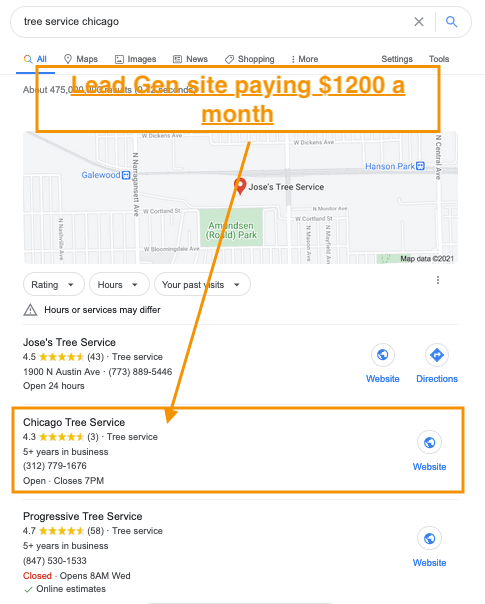

I also get to select the businesses I choose to partner with who will service my customers. I can ensure they are honest and will provide quality service.
These biz owners are thankful for the leads I send their way because they don't want to deal with paid ads or social media marketing, which has no guarantee of helping generating consistent business and they have to keep throwing money at them or the leads dry up.
With dozens of sites paying me $750 - $2700 a month with automated billing, it's better than mailbox money.
SCALE
If you really want to make that F.U. money, you need a business model that can scale.
The problem with dropshipping, and especially dropsurfing, is the short sales cycle. That wave is going to crash and so will the sales volume on that product.
Meaning you have to keep looking for new products to sell and go through the ad testing phase again.


It's like running in a never-ending circle with no clear exit point.
On the other hand, with Local Lead Gen, once the asset is in place and ranked, it rarely requires any maintenance and the leads will keep rolling in.
And the best bit; you can build as many as you want and they just keep adding up.
Imagine putting up 10 a month.
That's 120 a year. Even if you only rent out half of them for an average of $750:
60 lead gens x $750 a month = $45,000


Now you get an idea of the kind of income I have been able to generate with my Local Lead Generation biz and why I got out of dropshipping.
Conclusion
I hope you enjoyed my review of eCom Hacks and got something useful from it.
There's no doubt that Goetz knows his stuff and his section here on Facebook marketing with the algorithm insights is legit.
However, I'm really not convinced that eCom Hacks is going to teach you what you need to learn about picking and accessing the right products for dropsurfing/dropshipping.
In fact, I'm not going to recommend anyone try dropsurfing/dropshipping these days unless it's just a hobby and you don't care about losing money in the process.
The real players in the eCommerce sphere are working with branded products. And whenever a product becomes hot, the Chinese sellers will start selling it on Amazon. If there's going to be a good life-cycle to the item, you can bet that Amazon will create their own version too - with 1 or 2 day shipping at cheaper rates than you can offer on your store.
I saw this coming a couple of years ago and I'm glad I made the jump to Local Lead Gen where I have an entire ocean to myself.
If you've read this far, you know there this lead gen biz is intriguing, to say the least.
It could be the decision that changes your entire future.
Do yourself a massive favor and check it out for yourself.
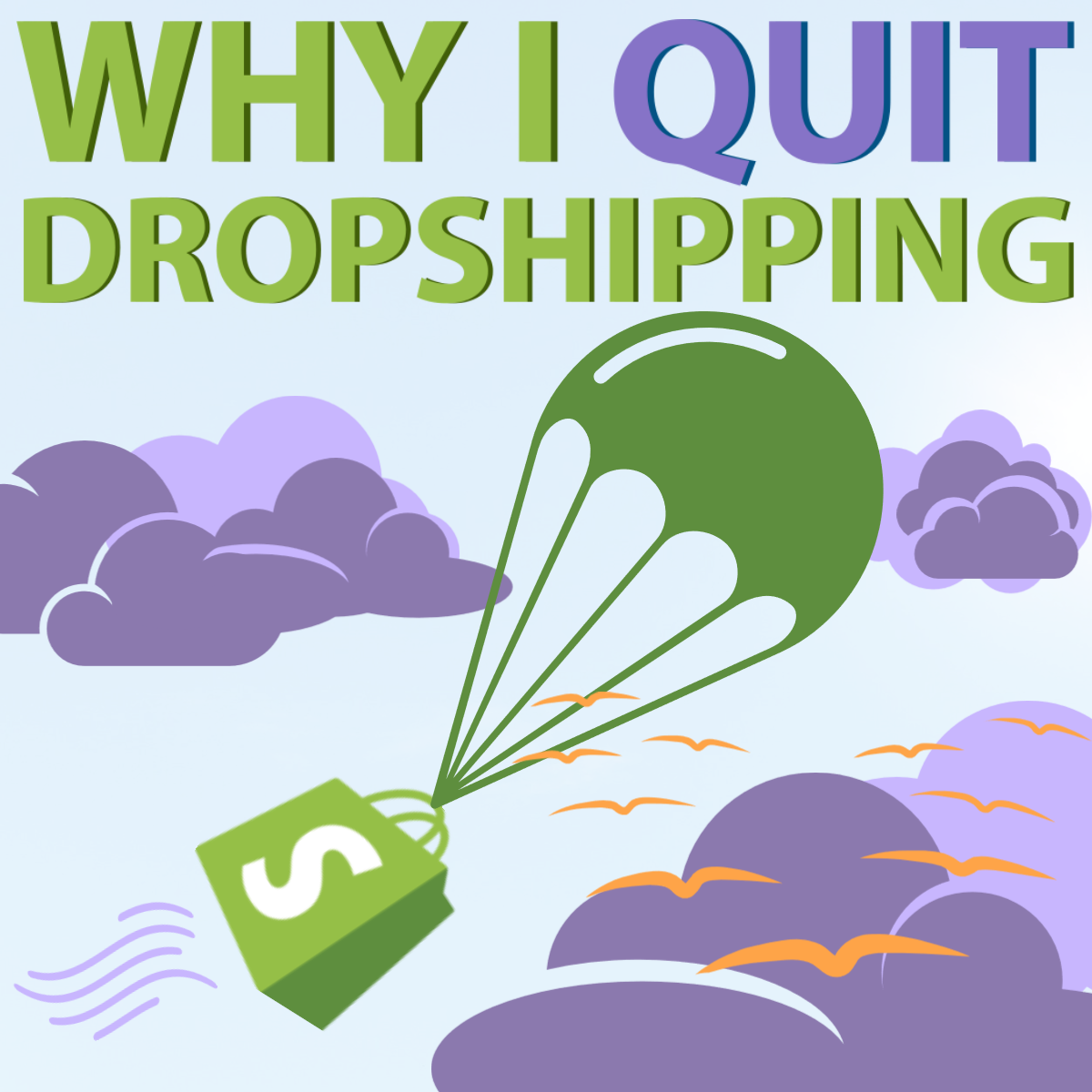

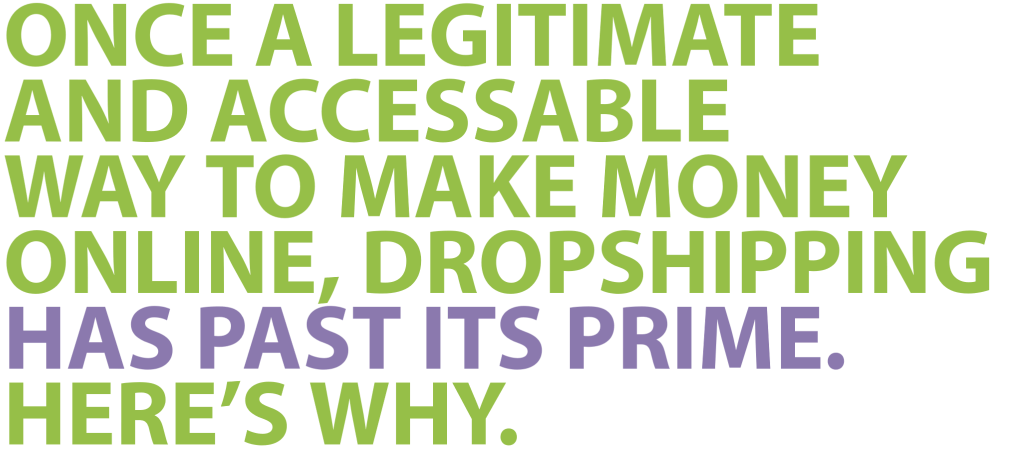



Literally anyone can get into dropshipping with hardly any effort or upfront cash. Regardless of what you're selling, you'll likely be competing with millions of other sellers in an extremely saturated market.
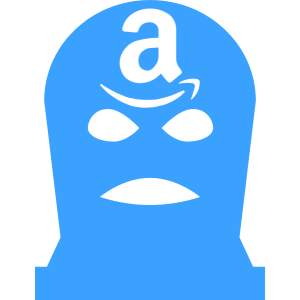

Plagiarism is rampant in dropshipping. It's far too easy for your competitors to copy your ads, your sales funnels, and even your Shopify store. Be assured that if you find a successful product, you will be copied and then undercut by your competition.
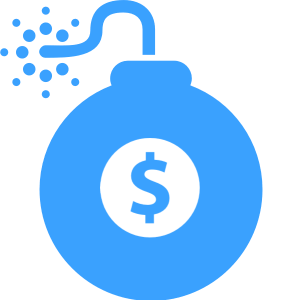

Advertisements have no guarantee of being profitable - and one should expect to occasionally have campaigns that fall short of expectations (which can cost thousands of dollars).


Facebook's ad prices have doubled this last year. Successful dropshippers can expect to profit roughly 8-15%, which only really works if you're selling major volumes of product.
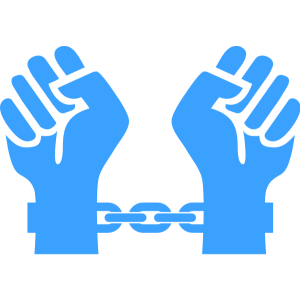

The key to long term wealth is in building and owning valuable assets, but with dropshipping, you own nothing. You're an enslaved middleman to Shopify, Facebook, and Google. Their ad and metrics systems are unreliable and ever changing - and account deactivations are a way of life in eCommerce.
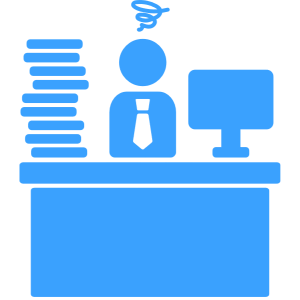

Ads must be developed and then monitored - and failing to do so could mean unprofitable ads or, even worse, ad account suspension.


Trending items are most often the only products that have a profitable ROI. Many businesses meet their ends on the fall of whatever trend they were capitalizing on.

Shipping from China takes six weeks, so expect lots of customer complaints and chargebacks (which are deducted from your bank account).


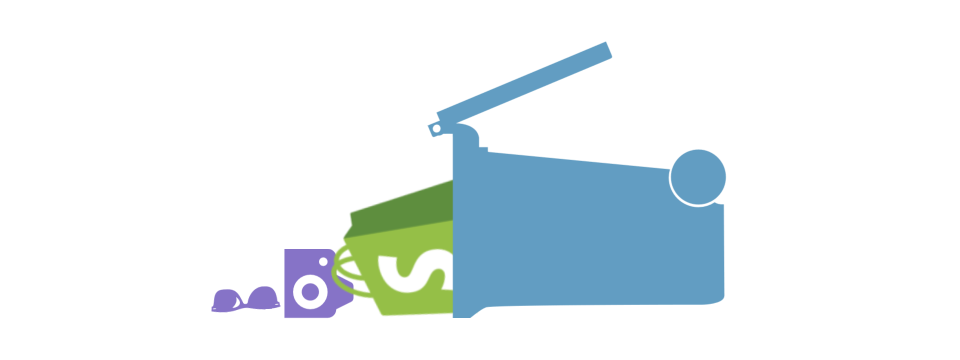

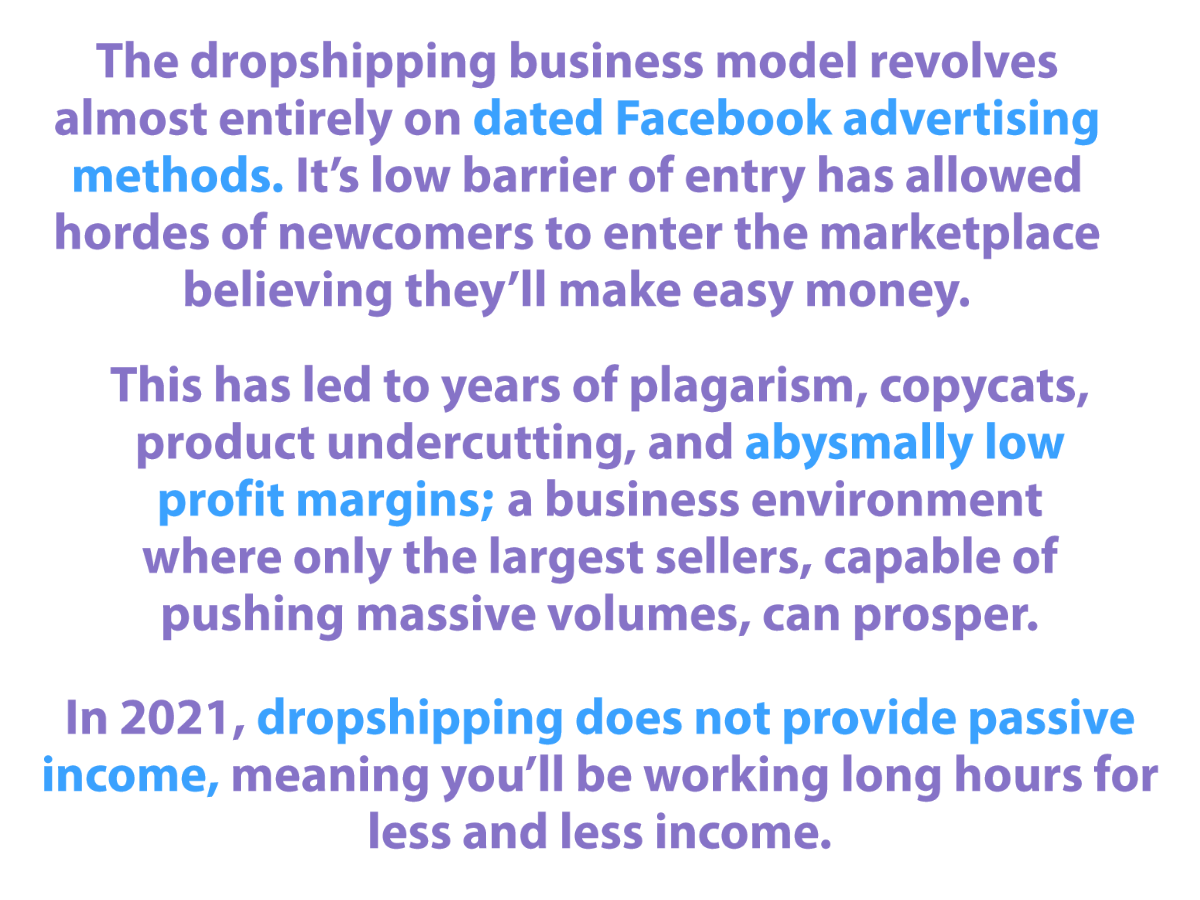

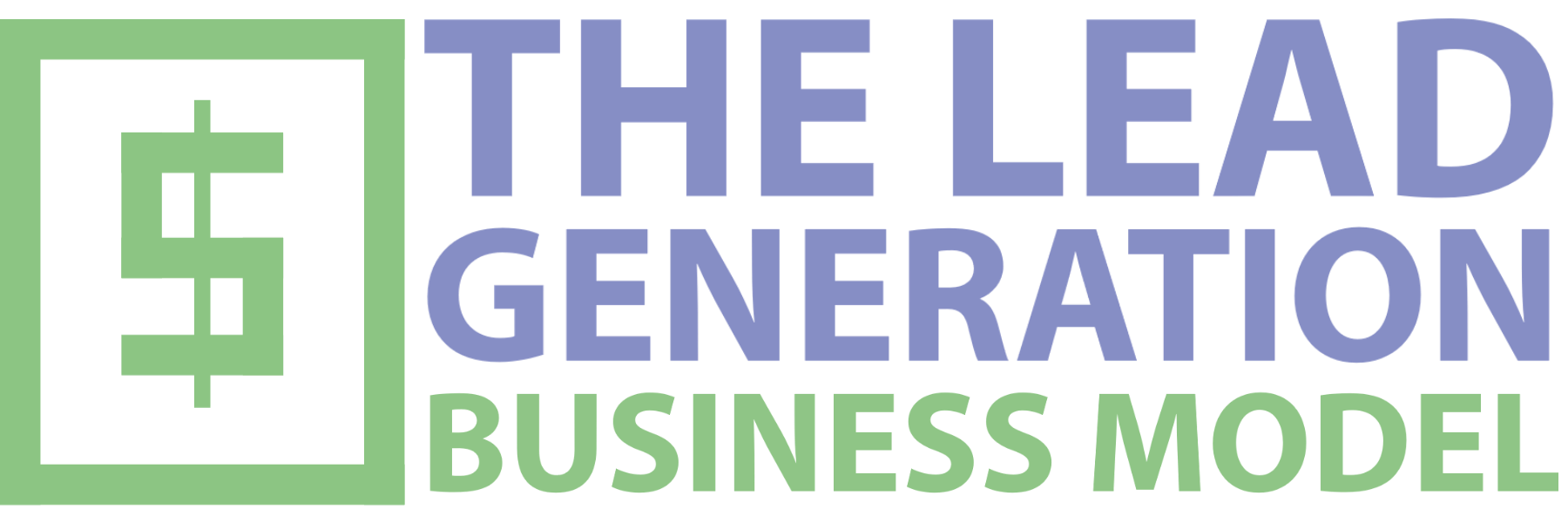



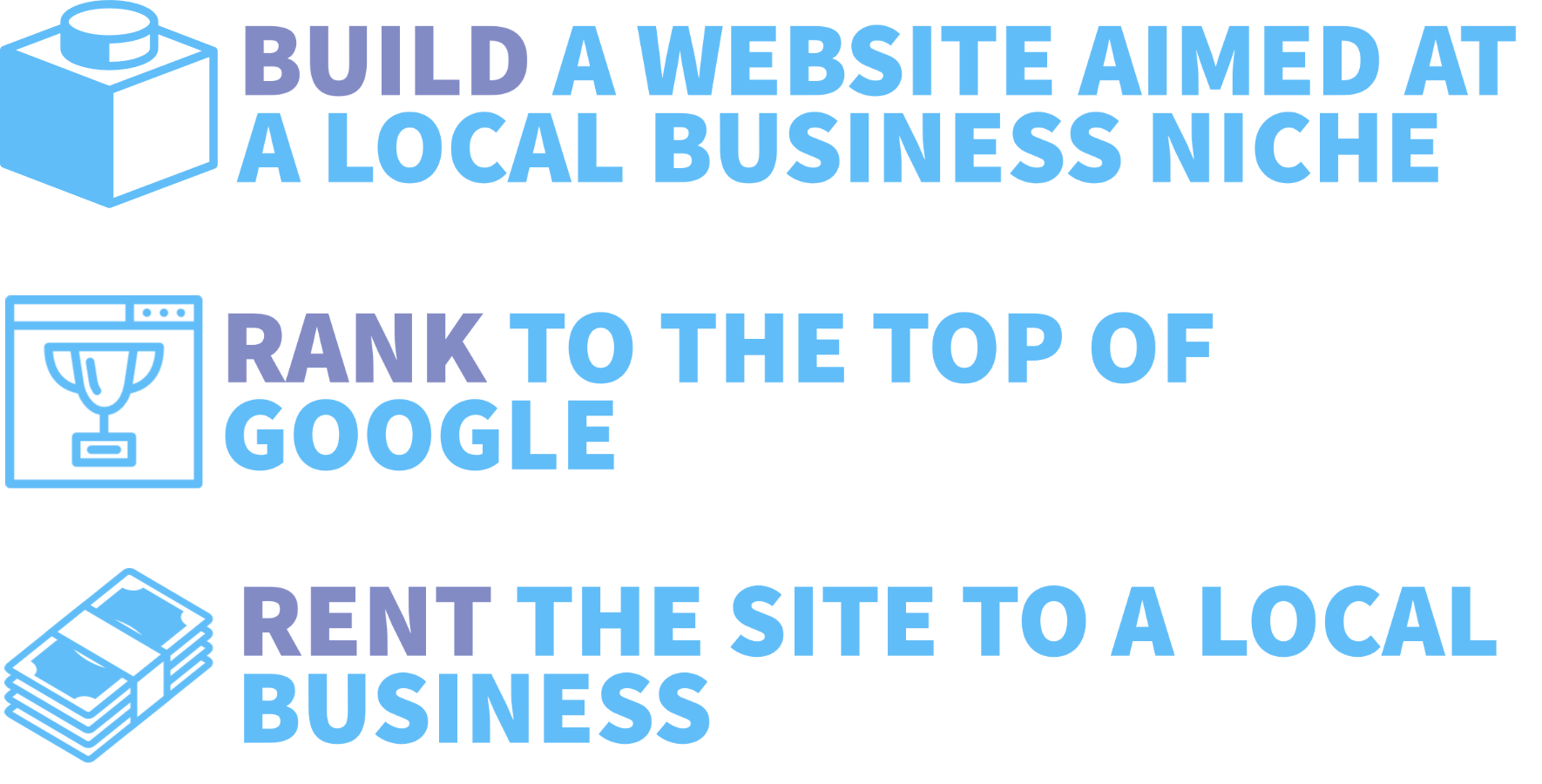



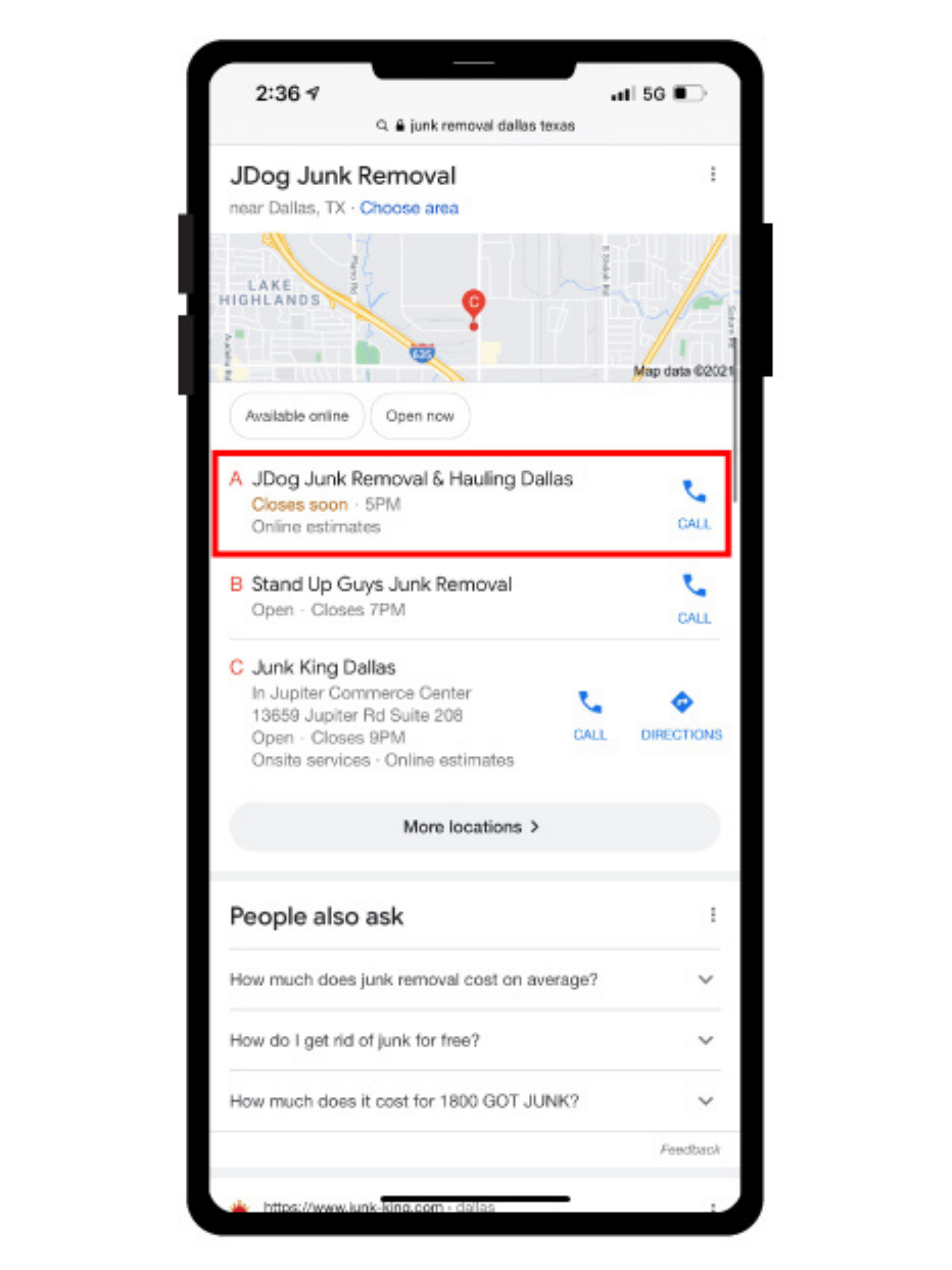



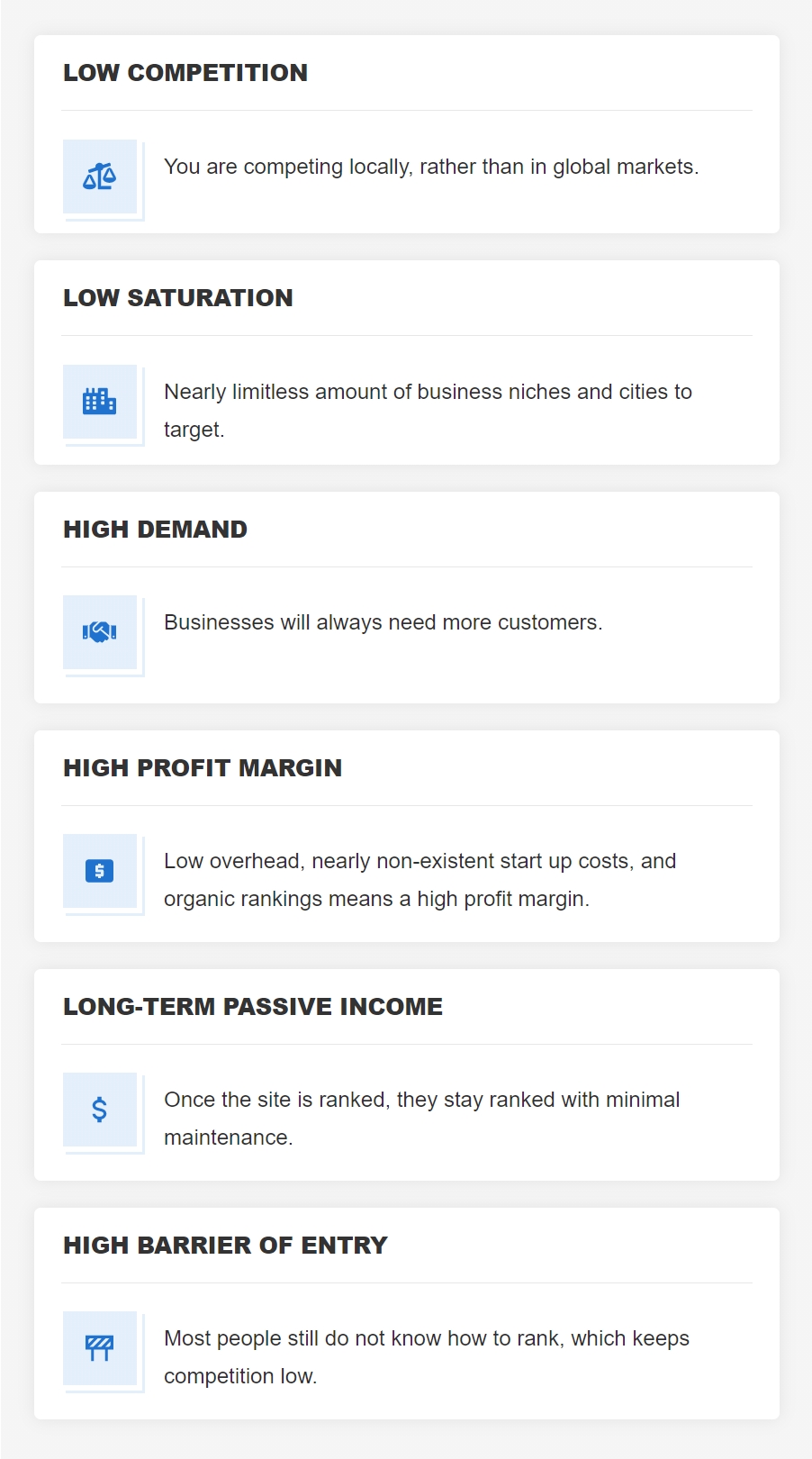





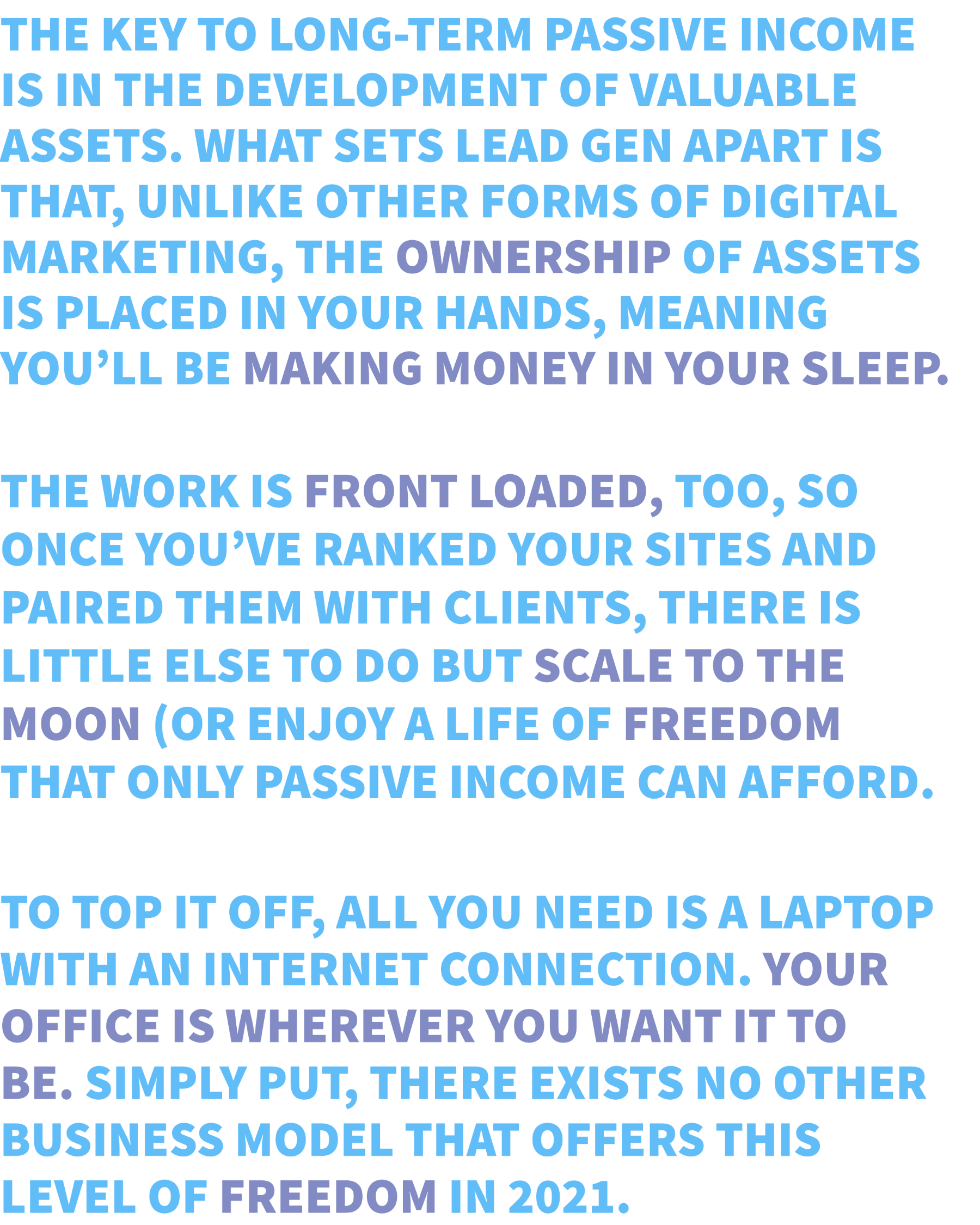

Local Lead Generation
Click the button below to find out how you can get started with Lead Generation today!